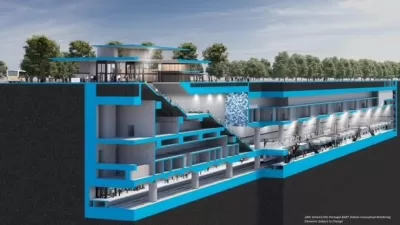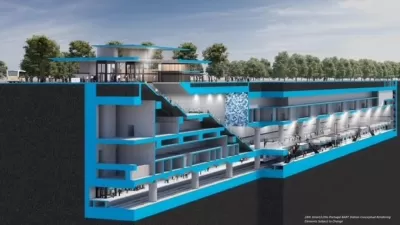A report attained by the Mercury News uncovers information regarding the BART Silicon Valley Phase II Project that will come as a surprise to anyone paying attention to recent federal support for the project.

The opening of BART's San Jose extension could be delayed until 2034—a four-year increase of the current timeline, according to a Federal Transit Administration (FTA) report acquired by the Mercury News through a Public Records Act request.
Reporting the scoop for the Mercury News, Maggie Angst shares the revelations contained in the FTA's report. In addition to the increasing timeline, the report also shows a budget exceeding original estimates.
"[F]ederal officials indicated late last year that the project could rise to $9.1 billion — $4.4 billion over the VTA’s initial cost estimate and $2.2 billion over the agency’s most recent projection," reports Angst.
According to Angst, the review was part of the Expedited Project Delivery (EPD) Pilot Program, a new federal program designed to streamline federal funding to transit projects. In an October press release announcing the EPD funding, the VTA was still targeting 2030 for project completion and a $6.9 billion price tag.
The BART Silicon Valley Phase II Project, as the project is officially known, includes four stations, a maintenance facility, and five miles of subway tunnel, and will extend BART service from the newly opened Berryessa Station in northeast San Jose through downtown San Jose into the city of Santa Clara. The project is the largest infrastructure project Santa Clara County history and is under the authority of the Santa Clara Valley Transportation Authority.
The BART Silicon Valley Phase II project has attracted heated criticism in the past for exorbitant costs connected to questionable design, engineering, and planning decisions, including an episode in March 2021 that made the Planetizen newswire.
FULL STORY: Exclusive: Feds say BART’s San Jose extension likely delayed till 2034

Maui's Vacation Rental Debate Turns Ugly
Verbal attacks, misinformation campaigns and fistfights plague a high-stakes debate to convert thousands of vacation rentals into long-term housing.

Planetizen Federal Action Tracker
A weekly monitor of how Trump’s orders and actions are impacting planners and planning in America.

In Urban Planning, AI Prompting Could be the New Design Thinking
Creativity has long been key to great urban design. What if we see AI as our new creative partner?

King County Supportive Housing Program Offers Hope for Unhoused Residents
The county is taking a ‘Housing First’ approach that prioritizes getting people into housing, then offering wraparound supportive services.

Researchers Use AI to Get Clearer Picture of US Housing
Analysts are using artificial intelligence to supercharge their research by allowing them to comb through data faster. Though these AI tools can be error prone, they save time and housing researchers are optimistic about the future.

Making Shared Micromobility More Inclusive
Cities and shared mobility system operators can do more to include people with disabilities in planning and operations, per a new report.
Urban Design for Planners 1: Software Tools
This six-course series explores essential urban design concepts using open source software and equips planners with the tools they need to participate fully in the urban design process.
Planning for Universal Design
Learn the tools for implementing Universal Design in planning regulations.
planning NEXT
Appalachian Highlands Housing Partners
Mpact (founded as Rail~Volution)
City of Camden Redevelopment Agency
City of Astoria
City of Portland
City of Laramie





























